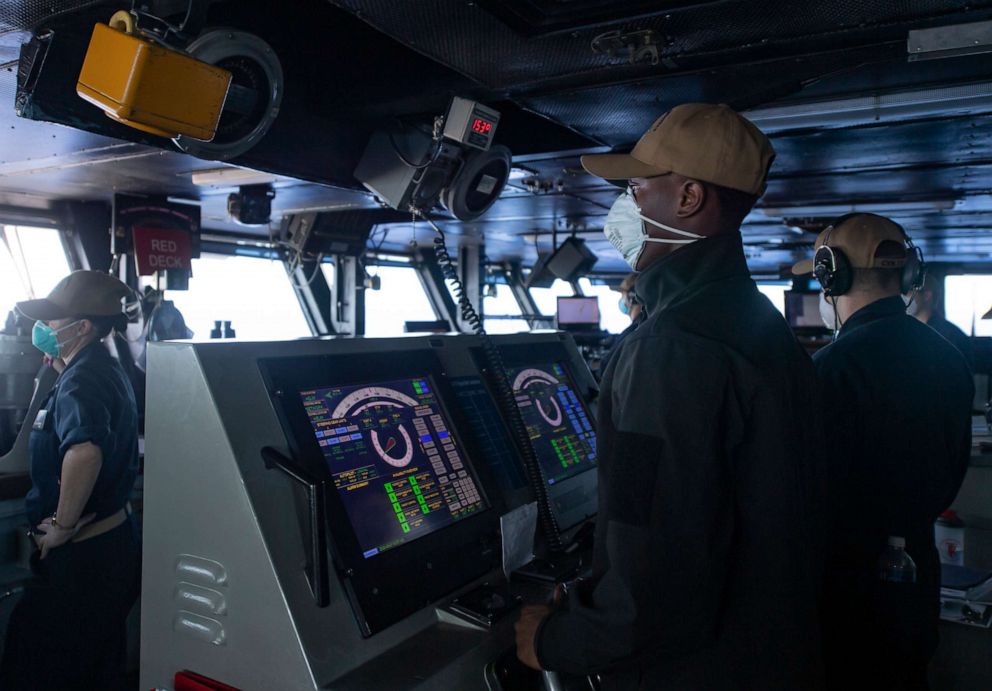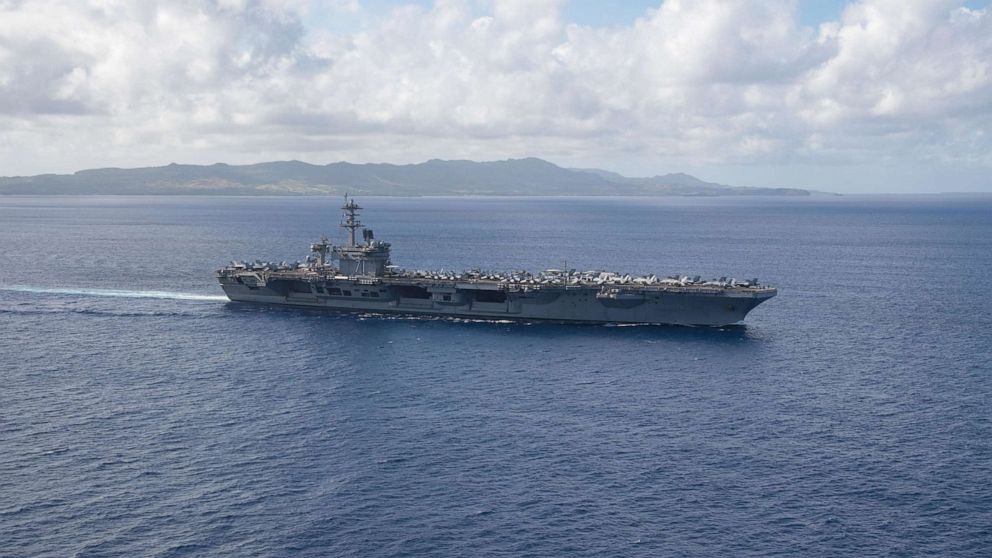Navy upholds firing of carrier captain and holds up promotion of admiral because of handling of virus outbreak on ship
The outbreak aboard the USS Theodore Roosevelt sidelined carrier for two months.
In a surprising reversal, the Navy has decided not to reinstate the captain of the USS Theodore Roosevelt and has halted the promotion of the rear admiral in his direct chain of command because of their handling of the novel coronavirus outbreak aboard the aircraft carrier.
The outbreak aboard the ship sidelined the Roosevelt in Guam for more than two months and left a quarter of the 5,000 sailors aboard infected with the virus, including one who died.
Adm. Mike Gilday, the chief of naval operations, announced Friday that Capt. Brett Crozier will not be reinstated to his command and that the promotion of Rear Adm. Stuart Baker, the carrier's strike group commander who also served on the Roosevelt, to become two-star admiral would be placed on hold.
Gilday decided on the actions after reviewing a broader investigation into the circumstances of the virus' spread aboard the ship and the chain of command's response.
The decision to uphold Crozier's firing is a dramatic reversal from Gilday's earlier recommendation in late April to take the unprecedented step of reinstating him to his command.
At a Pentagon news conference on Friday, Gilday explained that he had changed his opinion about reinstating Crozier after a broad investigation brought to light shortcomings about his decisions as the virus spread on the ship.

"It is my belief that both Adm. Baker and Capt. Crozier fell well short of what we expect of those in command," Gilday told reporters at a Pentagon news conference. "Had I known then what I know today, I would have not made that recommendation to reinstate Capt. Crozier. If Capt. Crozier were still in command today, I would be relieving him."
"They did not do enough soon enough to fulfill their primary obligation," said Gilday. "And they did not effectively carry out our guidelines to prevent spread of the virus."
Gilday said they were both slow in getting the sailors off of the ship and into safer environments after the carrier arrived in Guam for a scheduled port of call.
The Navy's top admiral said Crozier had exercised questionable judgment in releasing some sailors from quarantine on the ship which may have increased the spread of the virus aboard the carrier.

"When obstacles arose, both failed to tackle the problem head on and to take charge, and in a number of instances they placed crew comfort in front of crew safety," said Gilday.
Crozier was relieved of command in March shortly after the carrier had arrived in Guam after the first cases of the coronavirus were discovered aboard the ship. Crozier wrote and then sent a letter -- allegedly around his chain of command -- asking for more Navy assistance to stem an outbreak on his ship.
The letter was eventually leaked and published by a newspaper. The resulting controversy led to a series of events that resulted in Crozier's firing by Thomas Modly, the acting secretary of the Navy. Modly resigned days later, after he made disparaging remarks about Crozier to the ship's crew, labeling him as "too stupid or too naive" to think that the letter would not have become public.
In late April, after receiving the results of an initial review into the matter, Gilday recommended reinstating Crozier to command of his ship. But Defense Secretary Mark Esper requested that the Navy undertake a broader review that would look at not just why Crozier had chosen to write the letter, but also look at the actions and decisions made by the chain of command in response to the COVID-19 outbreak aboard the ship.
Gilday explained Friday that he based his initial recommendation to reinstate Crozier on a review that only looked at the circumstances of why the letter was sent.
He said the broader review requested by Esper highlighted actions by both Crozier and Baker that led him to conclude differently.
"Secretary Esper believes the investigation to have been thorough and fair and supports the Navy’s decisions based on their findings," said Jonathan Rath Hoffman, the Pentagon's chief spokesperson. "We are proud of the crew of the USS Theodore Roosevelt and am glad that they are back at sea in the western Pacific projecting American power.”
In his letter, Crozier had requested that 10% of the crew remain aboard the carrier to carry out essential services and that the majority should be placed in quarantine on Guam. In the end those proposed steps were similar to what the Navy carried out as the ship remained in Guam for 10 weeks while the ship was disinfected and the ship's crew was quarantined and recovered from the virus.
Despite those efforts, 1,273 sailors among the 4,865 aboard contracted the virus, equal to 26% of the crew, including the one who died from complications from the virus.
In the wake of the outbreaks aboard the Roosevelt and the USS Kidd, a guided-missile destroyer, the Navy implemented new health and safety procedures to prevent outbreaks among the 90 Navy ships currently at sea.

That includes regular testing, the wearing of masks and social distancing are practiced in all Navy units, but a main focus is on ships at sea where close quarters can facilitate a quick spread of the virus among the crew.
Before Navy ships head out on a deployment, crews are tested and quarantined so that no one will bring the virus aboard a ship. To ensure that the ships remain a "COVID-free bubble," the Navy is now developing new rules for where its ships can make ports of call.
The Navy will only allow ports of call at a select number of Navy bases around the world that will serve as "safe havens."
The carrier left Guam in early June to resume its deployment to the western Pacific, though it remains unclear when the ship will eventually return to its homeport of San Diego.
On Thursday, two of the ship's aviators ejected safely from their F/A-18F fighter after it crashed in the Philippine Sea.
The Navy now believes the virus did come aboard the ship following a port of call in Vietnam and not through air crews that arrived on the ship as was believed.
Gilday said Friday that subsequent testing of those air crews did not show they had been infected with the virus.
After the first COVID inspections were detected aboard the ship and initial suspicions pointed to the port of call in Vietnam as a possible source of the virus, critics questioned why the Navy had decided to continue with the stop in Da Nang as the virus had been detected in other parts of the country.
But Gilday said he had not found fault with the decision by Adm. Phil Davidson to proceed with the port of call in Vietnam.
"Risk was adequately considered and mitigated," said Gilday.
ABC News' Elizabeth McLaughlin contributed to this report.




